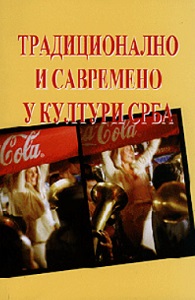Проблематика ритуала литијског опхода у светлу новијих истраживања
Problem Area of Ritual Procession against the Background of Recent Research
Author(s): Ivica R. Todorović
Subject(s): Customs / Folklore, Theology and Religion, Semantics, Structuralism and Post-Structuralism, Cultural Anthropology / Ethnology
Published by: Етнографски институт САНУ
Keywords: the most complex ritual; the structural and semantic analysis; the results and conclusions of the five-year research; the eastern Swedish cultural zone;
Summary/Abstract: The ceremonial act of procession - before its banning subsequent to World War II - was widespread on the Serbian ethnic territory as one of the most important rituals. This phenomenon features a whole range of exceptionally interesting characteristics which have never been scientifically investigated: from the specific ways of structuring the ritual procession path to the intricate mythical complex accompanying the ritual. The results of years-long research of this phenomenon point to its multi-layered semantic and structural makeup. The contemplated ritual may therefore be used as a key in solving numerous dilemmas relating, on the one hand, to the research of the Serbian folk religion, and, on the other, to the research of the mythical/ritual systems structure in general. The function of the procession ritual was to provide a tight social unity of the rural community and favourable weather conditions for a fertile year. On the semantic plane, this ritual is exceptionally complex, with a number of connotation levels which all together make up a unique mythic-ritual text. In terms of mythological analysis, the most significant mythical determinants to be singled out here are the magic circle, the sacred trees, and the lord o f the weather, with a deeper mythological layer relating to the global cycle of annual folkways. Also met with in this ritual are the elements of diverse cults (agricultural, solar, vegetational, ancestor worship, etc.). Structural and semantic analyses of the procession ritual have revealed a spectrum of syntagmatic expressions and paradigmatic possibilities of the analyzed phenomenon, with an emphasis on specific patterns observed in the most intricate manifestations of the procession ritual - similar or identical to the patterns noted (in previous research) within the framework of heterogeneous linguistic, logical, mythical and ritualistic models. This scholarly approach is congruous with a hypothesis on the existence of homologous structural patterns, tentatively called patterns of the primary structure of thinking of universal character - revealed in diverse spheres of culture and nature.
Book: Традиционално и савремено у култури Срба
- Page Range: 61-71
- Page Count: 11
- Publication Year: 2003
- Language: Serbian
- Content File-PDF

